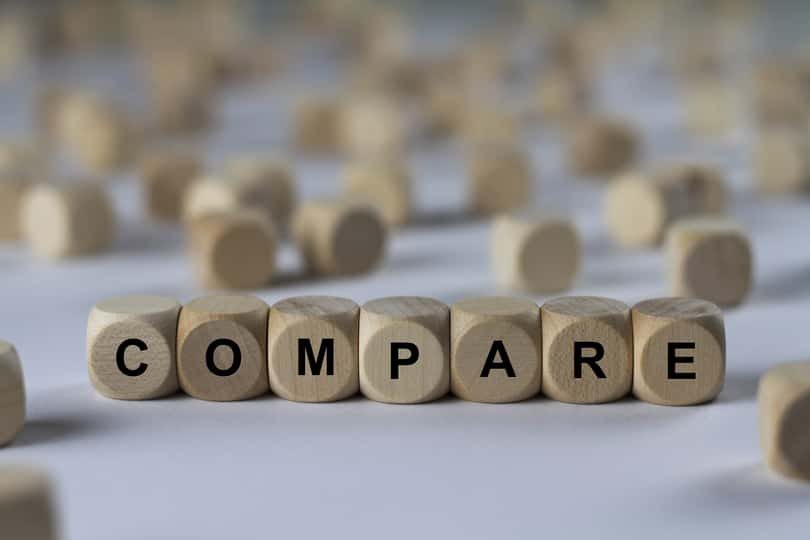Based in Sao Paulo, Brazil, Ambev S.A. (ABEV - Get Rating) produces, distributes, sells beer, draft beer, carbonated soft drinks, other non-alcoholic beverages, malt, and food products. Its segments include Brazil, Central America and the Caribbean, Latin America South, and Canada. In comparison, The Boston Beer Company, Inc. (SAM - Get Rating) produces and sells alcoholic beverages primarily in the United States. In addition to its flagship beer—Samuel Adams Boston Lager—it also offers hard ciders and hard seltzers under the Twisted Tea, Angry Orchard, Dogfish Head, and Concrete Beach brand names.
The beer industry suffered a setback amid the COVID-19 pandemic due to a dip in retail beer sales, with several stadiums, concert venues, bars, and restaurants closing their doors or operating at limited capacity. However, beer consumption is expected to increase in the coming months with the reopening of bars and restaurants with precautions to limit the spread of COVID-19. According to a Business Wire report, the global beer market is expected to reach $710.89 billion by 2025. So, both ABEV and SAM should benefit.
ABEV has gained 0.3% in price year-to-date, while SAM generated negative returns. Also, ABEV’s 11.6% gains over the past nine months are higher than SAM’s negative returns. Furthermore, ABEV is the clear winner in terms of the past nine months’ performance, with 34.1% price gains versus SAM’s negative returns.
But which of these two stocks is a better buy now? Let’s find out.
Latest Developments
ABEV’s CEO Jean Jereissati said on July 29, 2021, that “Our commercial strategy, innovations, tech platforms and operational excellence delivered the highest consolidated volumes in a second-quarter on record. When looking at rolling 12 months consolidated volumes, we are now at all-time high levels, 5 million hectoliters above our peak in 2015.”
Last month, SAM and PepsiCo, Inc. (PEP) announced plans to enter a business collaboration to produce HARD MTN DEW alcoholic beverages. With adult drinkers’ tastes evolving, SAM could witness increasing demand for this beverage.
Recent Financial Results
ABEV’s net revenue increased 35.3% year-over-year to R$15.71 billion ($3 billion) for its fiscal second quarter ended June 30, 2021. The company’s normalized EBITDA grew 58% year-over-year to R$5.29 billion ($1.01 billion). Its normalized profit increased 115.9% year-over-year to R$2.96 billion ($565.34 million), while its normalized EPS came in at R$0.19 ($0.04), up 119.8% year-over-year.
SAM’s net revenue increased 33.3% year-over-year to $602.80 million for its fiscal second quarter, ended June 26, 2021. In addition, the company’s total assets grew 13.2% year-over-year to $1.56 billion. However, its net income decreased 1.6% year-over-year to $59.19 million, while its EPS came in at $4.75, down 2.7% year-over-year.
Past and Expected Financial Performance
ABEV’s revenue and EPS have grown at CAGRs of 10.3% and 22.7%, respectively, over the past three years. Analysts expect ABEV’s revenue to increase 39.9% for the quarter ending September 30, 2021, and 16% in its fiscal year 2021. However, the company’s EPS is expected to decline 37.5% for the quarter ending December 31, 2021. Again, its EPS is expected to grow at a 7.4% rate per annum over the next five years.
In comparison , SAM’s revenue and EPS have grown at CAGRs of 43.7% and 33.1%, respectively, over the past three years. The company’s revenue is expected to increase 8.9% for the quarter ending September 30, 2021, and 24.6% in its fiscal year 2021. Its EPS is expected to climb 5.7% for the quarter ending December 31, 2021. Also, SAM’s EPS is expected to grow at a 25% rate per annum over the next five years.
Profitability
ABEV’s trailing-12-month revenue is 6.37 times SAM’s. ABEV is also more profitable, with 52.6% and 21.9% respective gross profit and net income margins, versus SAM’s 46.9% and 11.3%.
However, SAM’s ROE, ROA, and ROTC of 24.94%, 13.84%, and 18.66%, respectively, are higher than ABEV’s 19.16%, 8.50%, and 12.57%.
Valuation
In terms of forward non-GAAP P/E, SAM is currently trading at 31.03x, which is 35.9% higher than ABEV’s 22.83x. Moreover, SAM’s 18.03x forward EV/EBITDA ratio is 61.4% higher than ABEV’s 11.17x.
So, ABEV is the more affordable stock.
POWR Ratings
ABEV has an overall B rating, which equates to a Buy in our proprietary POWR Ratings system. In comparison, SAM has an overall D rating, which translates to Sell. The POWR Ratings are calculated considering 118 different factors, with each factor weighted to an optimal degree.
ABEV has an A grade for Quality. This is justified given ABEV’s 21.91% trailing-12-month net income margin, which is 298.2% higher than the 5.50% industry average. In contrast, SAM has a Quality grade of B, which is in sync with its 11.34% trailing-12-month net income margin, which is 106.1% higher than the 5.50% industry average. ABEV has a C grade for Sentiment, which is in sync with favorable analyst sentiment. In comparison , SAM has an F grade for Sentiment, consistent with unfavorable analyst sentiment.
Of the 38 stocks in the B-rated Beverages industry, ABEV is ranked #13, while SAM is ranked #32.
Beyond what I’ve stated above, we have also rated the stocks for Momentum, Stability, Growth, and Quality. Click here to view all the ABEV ratings. Also, get all the SAM ratings here.
The Winner
Beer sales are expected to increase in the coming months as bars and restaurants return to full scale operation. While both ABEV and SAM are prominent players in the beer industry, we think it is better to bet on ABEV now because of its better financials and lower valuation.
Our research shows that odds of success increase when one invests in stocks with an Overall Rating of Strong Buy or Buy. View all the top-rated stocks in the Beverage industry here.
Want More Great Investing Ideas?
ABEV shares were trading at $3.09 per share on Tuesday afternoon, up $0.02 (+0.65%). Year-to-date, ABEV has gained 1.47%, versus a 19.58% rise in the benchmark S&P 500 index during the same period.
About the Author: Nimesh Jaiswal

Nimesh Jaiswal's fervent interest in analyzing and interpreting financial data led him to a career as a financial analyst and journalist. The importance of financial statements in driving a stock’s price is the key approach that he follows while advising investors in his articles. More...
More Resources for the Stocks in this Article
| Ticker | POWR Rating | Industry Rank | Rank in Industry |
| ABEV | Get Rating | Get Rating | Get Rating |
| SAM | Get Rating | Get Rating | Get Rating |






